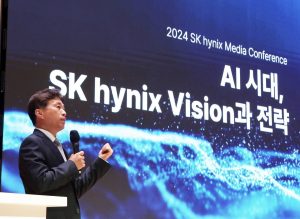Popular Keywords
- About Us
-
Research Report
Research Directory
Semiconductors
LED
Consumer Electronics
Emerging Technologies
- Selected Topics
- Membership
- Price Trends
- Press Center
- News
- Events
- Contact Us
AI
News

[News] U.S. Reportedly Probes DeepSeek’s Acquisition of Banned AI Chips as NVIDIA’s Singapore Sales Soar
According to a report from Liberty Times, citing Bloomberg, the White House and the FBI have launched an investigation into whether China’s AI startup DeepSeek illegally obtained NVIDIA chips through third-party buyers in Singapore and other locations. DeepSeek claims its technological breakth...
News

[News] DeepSeek Disrupts AI Landscape: Potential Impacts and Comments from Tech Giants
As Chinese AI startup DeepSeek shakes up the global market by claiming its R1 model surpasses OpenAI’s latest o1 while costing only a fraction of the price, it is also sending a clear message. As highlighted by Nikkei, DeepSeek is forcing a market-wide rethink—on valuations, competition, and eve...
News

[News] A $500 Billion Investment Plan to Launch, Benefiting AI Chips
Under the influence of large AI models, AI infrastructure projects are booming worldwide. OpenAI has announced the launch of a $500 billion "Stargate" plan, while ByteDance is reportedly allocating significant funds to build and enhance its AI infrastructure. Although there are differing opinions...
News

[News] Former Intel CEO Pat Gelsinger Becomes an Investor for UK AI Startup Fractile
According to a report from Liberty Times, former Intel CEO Pat Gelsinger, who was announced as having “retired” from the company on December 2, 2024, revealed that he has become a seed investor in the UK-based AI chip startup Fractile.ai. I am thrilled to be a seed investor in @Fractile_ai, a...
News

[News] SK Hynix Sets 2024 Record, Surpasses Samsung in Q4 Profit for the First Time
SK hynix announced today that it recorded best-ever yearly performance with 66.1930 trillion won in revenues, 23.5 trillion won in operating profit with an operating margin of 35%, and 19.8 trillion won in net profit with a net margin of 30%. SK hynix’s yearly revenues marked all-time high, exc...
- Page 2
- 24 page(s)
- 117 result(s)





